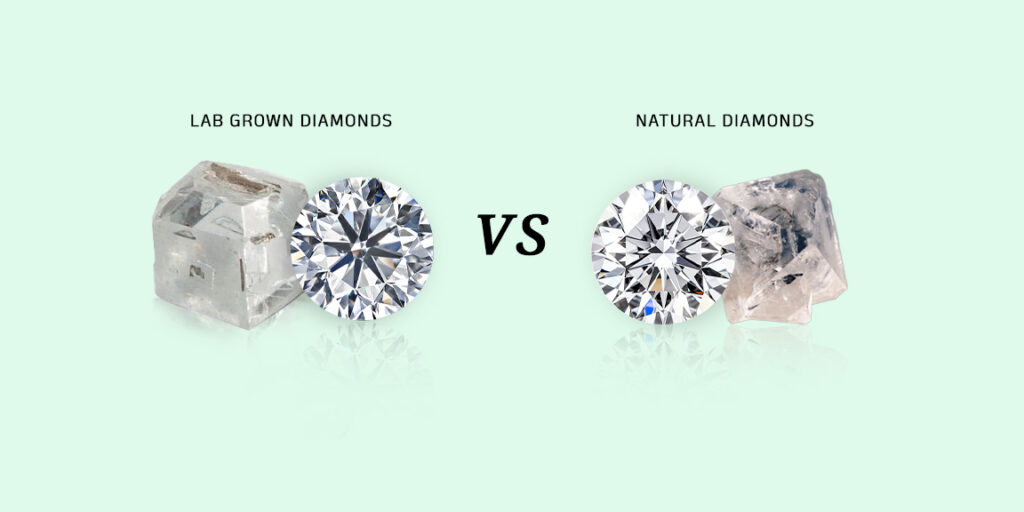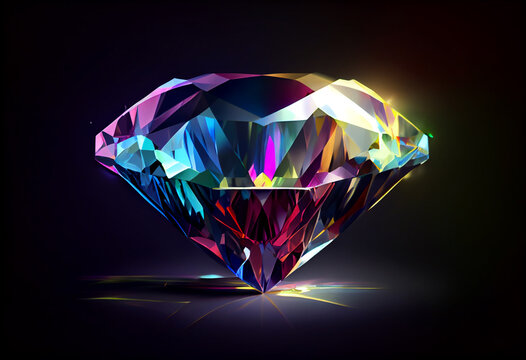Why Mined Diamonds Are Not Rare: A Comparison with Lab-Grown Diamonds

Table of Contents
ToggleIntroduction: Understanding Diamond Rarity
When it comes to diamonds, many believe that mined diamonds are not rare and that their scarcity contributes to their high price. However, this concept is being challenged by the emergence of lab-grown diamonds. In this article, we will explore why mined diamonds are not as rare as they are perceived to be and how lab diamonds offer an alternative that may soon redefine the diamond industry.
The Real Rarity of Mined Diamonds
Traditionally, mined diamonds have been marketed as a symbol of rarity and exclusivity. The idea that these natural stones are scarce has been a driving force behind their value. However, the truth is that while the earth’s natural processes do make diamonds difficult to find, they are not as rare as the diamond industry would have you believe. In fact, the global diamond supply is vast, with new diamond mines being discovered regularly. Despite the challenges of extraction, the supply of mined diamonds continues to grow, and they are not nearly as rare as the marketing would have you think.
The Rise of Lab-Grown Diamonds
Lab-grown diamonds, also known as synthetic diamonds, are an innovative solution that mimics the natural process of diamond formation in a controlled environment. Unlike mined diamonds, which take millions of years to form deep within the earth’s crust, lab diamonds are created in a matter of weeks. This faster production method means that lab-grown diamonds are not limited by the scarcity of natural resources, and they provide an alternative to the idea that mined diamonds are rare.
The Environmental Impact of Mined Diamonds
One of the key differences between mined diamonds and lab diamonds lies in their environmental impact. Mining for natural diamonds is a process that requires significant land disruption, water usage, and energy consumption. These practices can lead to habitat destruction, water contamination, and other negative effects on local ecosystems. In contrast, lab diamonds are created in a lab using sustainable processes with minimal environmental impact. This difference makes lab diamonds not only a more ethical choice but also a more environmentally friendly one compared to mined diamonds.
The Cost Comparison: Mined Diamonds vs. Lab Diamonds
Mined diamonds are typically much more expensive than their lab-grown counterparts. This price difference is primarily due to the cost of mining operations, the labor involved, and the associated environmental impacts. In addition, the marketing strategies used by diamond companies to promote mined diamonds as rare and valuable have inflated their prices. Lab-grown diamonds, on the other hand, are produced more efficiently and at a fraction of the cost. This makes lab diamonds an affordable and sustainable alternative to the high prices of mined diamonds.
The Durability and Quality of Lab Diamonds
Another key factor in the comparison between mined diamonds and lab diamonds is their quality. Lab-grown diamonds are chemically, physically, and optically identical to mined diamonds. They possess the same hardness and brilliance, meaning that they are just as durable and beautiful as any natural diamond. The only difference lies in their origin, not their appearance or performance. This makes lab diamonds an excellent choice for consumers seeking high-quality diamonds without the premium price tag associated with mined diamonds.
Consumer Preferences and the Shift Towards Lab Diamonds
As more people become aware of the true nature of mined diamonds and the advantages of lab-grown diamonds, consumer preferences are shifting. Many buyers are now looking for more affordable and sustainable options. Lab diamonds, with their lower cost and reduced environmental impact, have become an increasingly popular choice. Moreover, the growing availability of lab-grown diamonds in various shapes, sizes, and qualities has made it easier for consumers to find a diamond that suits their needs and budget.
The Future of the Diamond Industry
The future of the diamond industry is likely to be shaped by the increasing demand for lab-grown diamonds. As technology continues to improve, the production of lab diamonds will become even more efficient, making them more accessible to a wider audience. The widespread adoption of lab diamonds will also challenge the perception that mined diamonds are rare and valuable, leading to a shift in how diamonds are marketed and sold. This change is not only beneficial for consumers but also for the environment, as it will reduce the need for environmentally damaging mining practices.
Conclusion: Mined Diamonds Are Not Rare, and Lab Diamonds Are Here to Stay
In conclusion, the belief that mined diamonds are rare is a myth perpetuated by marketing and industry practices. Mined diamonds are abundant, and their perceived scarcity is largely a result of artificial scarcity created by the diamond industry. Lab-grown diamonds offer a more sustainable, affordable, and equally beautiful alternative. As more consumers become aware of the benefits of lab diamonds, the demand for mined diamonds will likely decrease, and the future of the diamond industry will be defined by lab-grown stones.






